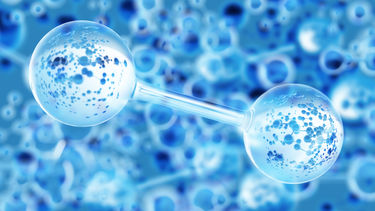The ongoing climate emergency necessitates a radical re-examination of fuel sources and the identification of technologies to aid the transition towards net-zero emissions. Hydrogen is routinely identified as critical to the decarbonisation of several industrial sectors from transportation to advanced manufacturing.
The most readily utilised production method of hydrogen is via steam-methane reforming. In this process, high temperature steam (700-1000°C) reacts with methane (commonly from natural gas) under high pressures (up to 25 bar) in the presence of a catalyst with underground carbon capture.
Whilst this method of producing "blue hydrogen" is certainly not zero-carbon, it enables the transition towards increased utilisation of hydrogen as a fuel source until green hydrogen production routes can be improved. In addition, experience with blue hydrogen allows the design of materials that can withstand the inimical conditions encountered during hydrogen production as well as providing improved understanding of the corrosion implications associated with the presence of hydrogen.
However, a critical requirement for the continued supply of blue hydrogen, and indeed for an increase in production, is the improvement in the alloys used in the reformer to design against creep and fatigue degradation and corrosive attack including caburisation and coking.
Currently, the alloys of choice available in the open market for reformer applications resemble austenitic steels or Nickel-based superalloys strengthened by significant carbine networks. Tubes used in reformer applications are produced through spin casting in large sections and as a result the manufacturing process is integral to the alloy development process.
The prospect of hydrogen usage increasing in the coming years and more efficient ways of producing blue hydrogen is regarded as a viable perception to contribute towards reduced carbon emission. To achieve this, the design of alloys with superior creep resistance that H39WM+ at reformer operating conditions, that take due consideration of the manufacturing process and its limitations, are necessary.
Prof. Kathy Christofidou and her team are developing these new materials with improved critical lifetimes that can be readily manufactured using spin casting without additional post-casting operations.
In the past year, following evaluation of the existing alloys, as well as through extensive computational studies, two novel alloy compositions have been proposed. These are now awaiting strip casting at our partners to allow full scale evaluation and creep testing.

